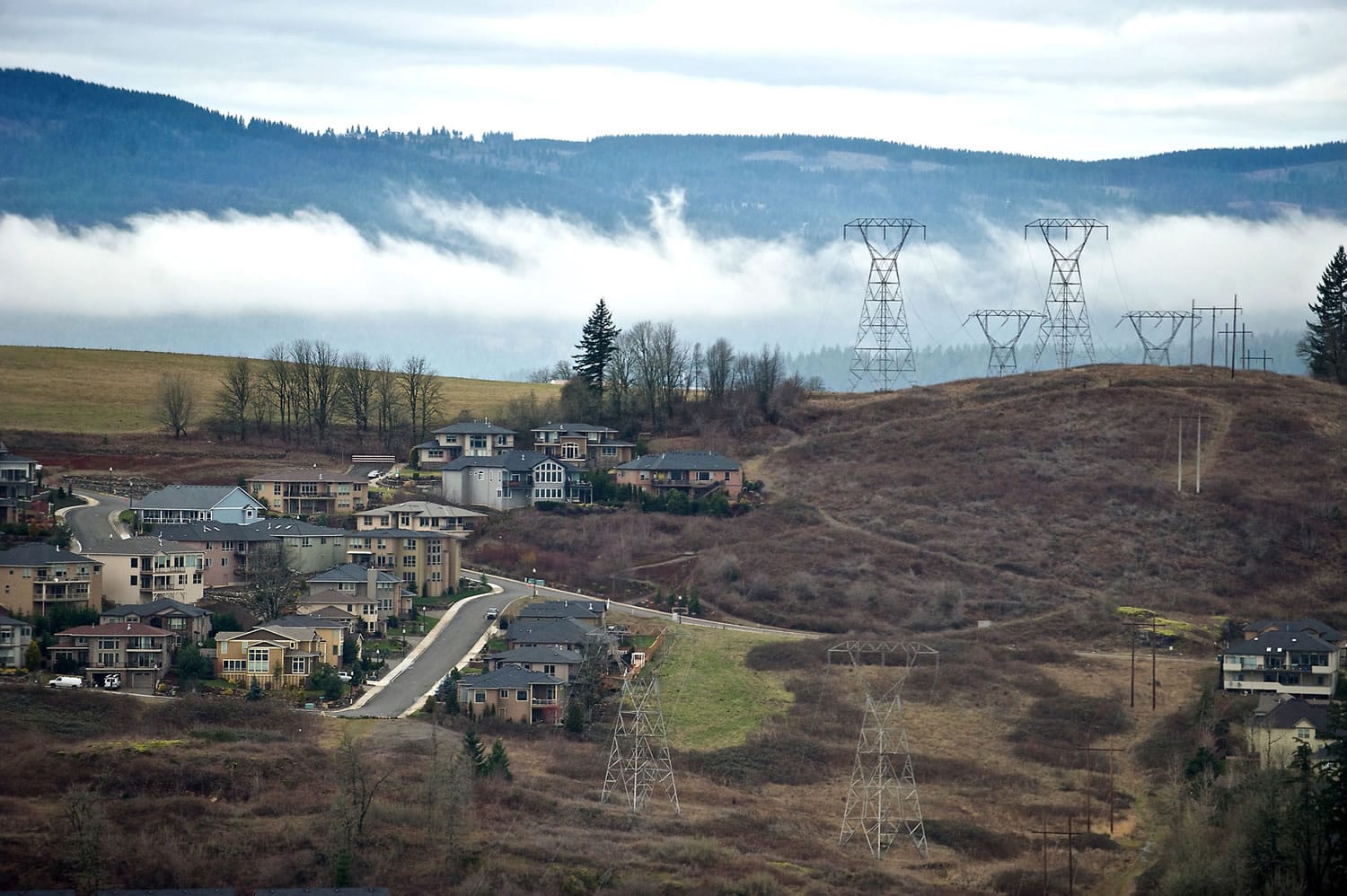More than six years after it was first proposed, a high-powered transmission line through Clark and Cowlitz counties is approaching decision day.
The Bonneville Power Administration plans to release a final environmental impact statement on the project by the end of this year. The voluminous document will offer an updated look at the proposed 500-kilovolt transmission line, including the preferred route the agency identified in 2012.
In 2016, BPA Administrator Elliot Mainzer could give the project a final green light. If that happens, construction could begin as early as 2017, according to BPA spokesman Kevin Wingert.
The so-called I-5 Corridor Reinforcement Project has faded from the public radar in many places. But it’s still very much on the minds of landowners whose properties sit along the preferred power-line route. Many aren’t happy with the planning process — or the outcome.
That’s not surprising, said BPA project manager Mark Korsness.
“It’s a tough thing to site 80 miles of transmission line and not have people upset about it,” Korsness said. “We do our best to minimize the impacts and make adjustments where we can. But in the end, we have to have a continuous path that’s 80 miles long.”
The line would stretch between Castle Rock and Troutdale, Ore., connecting new substations at each end. The proposed route would cross the Clark-Cowlitz county line just below Merwin Dam. It also would pass through Washougal and Camas before crossing the Columbia River. BPA has previously said the $459 million transmission line is needed to ease a strained regional power grid and add capacity for future growth.
There aren’t currently any 500-kilovolt transmission lines in Clark County. The new line, and the utility towers carrying it, would dwarf the 230-kilovolt and 345-kilovolt lines that now traverse the county.
Adding a 500-kilovolt line through Clark and Cowlitz counties will fortify the regional grid and meet demand, Korsness said. The idea is that if a section of transmission line temporarily goes offline, managers can still use the remaining parts of the system to get power to all regional substations and elsewhere, he said.
“The main benefit for this project is to increase capacity for the transmission system from north to south, so that in the future when the loads increase, we’re able to accommodate the needs of the region,” Korsness said.
Opponents of the project have questioned how much Southwest Washington would benefit, and how much power would be used here versus, say, California. Korsness acknowledged that power will be available for purchase from Canada to California. But he said he couldn’t speculate on what percentage of loads might be consumed here or somewhere else.
Landowner worries
BPA has spent much of this year meeting with property owners along the path of the proposed line, Korsness said. The agency has been able to move individual tower locations and access roads in some cases — but not all cases, he said.
Not everyone is happy. Ray Richards, whose Dole Valley property sits along the preferred route, said he and others in the area don’t feel heard. Richards engaged with BPA more than a year ago, hoping to shift the line to decrease its impact on landowners.
“Our argument is if they must build this line, and they won’t choose a different route, then at least go on property edges and don’t rip them right in two,” Richards said.
Richards estimates the proposed line is about 240 feet from his home. BPA didn’t shift the alignment despite requests to do so, he said.
“I don’t think they tried hard enough,” Richards said.
The Interstate 5 corridor project is unlike other transmission lines the federal power marketing agency has built recently. That’s largely because of its location, Korsness said.
“The biggest difference is that it’s west of the Cascades,” Korsness said. “We haven’t built high-voltage transmission of this size in 40 years west of the Cascades.”
The task is more difficult than it was 40 years ago, he said.
“We have to build lines through populated areas. That’s really challenging,” Korsness said.
Though the proposed route has been tweaked here and there, the preferred option hasn’t changed significantly since it was identified in 2012. In addition to BPA’s top administrator, the project’s final environmental impact statement will have to pass muster with a host of other regulatory agencies and rules.
If a decision to build is made next year, the line could be energized by 2021, Korsness said. Even if the expected need date changes, it will arrive eventually, he added.
“I don’t think the need is going to go away,” Korsness said.



